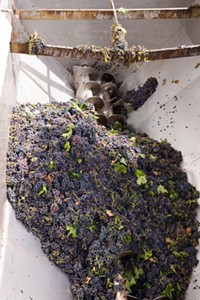Advertisement
Grab your lab coat. Let's get started
Welcome!
Welcome!
Create an account below to get 6 C&EN articles per month, receive newsletters and more - all free.
It seems this is your first time logging in online. Please enter the following information to continue.
As an ACS member you automatically get access to this site. All we need is few more details to create your reading experience.
Not you? Sign in with a different account.
Not you? Sign in with a different account.
ERROR 1
ERROR 1
ERROR 2
ERROR 2
ERROR 2
ERROR 2
ERROR 2
Password and Confirm password must match.
If you have an ACS member number, please enter it here so we can link this account to your membership. (optional)
ERROR 2
ACS values your privacy. By submitting your information, you are gaining access to C&EN and subscribing to our weekly newsletter. We use the information you provide to make your reading experience better, and we will never sell your data to third party members.
Environment
More Is Less When Growing Crops For Ethanol
Biofuels: Too much fertilizer on corn increases undesirable lignin without significant gains in cellulose yields
by Catherine M. Cooney
March 8, 2011

To increase food crop yields, farmers routinely feed corn plants high levels of nitrogen fertilizer, so you can hardly blame them for doing the same thing when growing corn for biofuels. But a team of researchers report new data that suggest a better approach is to use less fertilizer (Environ. Sci. Technol., DOI: 10.1021/es103252s).
Scientists worry about the amount of nitrogen fertilizer farmers use, because excess nitrogen can harm the environment, says Morgan Gallagher, the study's lead author and a postdoctoral researcher at Rice University. Nitrates that run off from farm land into nearby rivers and streams can cause health complications, such as gastrointestinal cancers, and low-oxygen dead zones in the world's oceans, such as the one in the Gulf of Mexico. This nitrogen can also generate nitrous oxide (N2O), a greenhouse gas 300 times more potent than CO2.
Corn growers use a lot of fertilizer when growing corn for ethanol, because they want to maximize the total mass of the grains and of the non-grain plant parts such as leaves, stems, and roots, Gallagher says. But she and her colleagues wondered if other variables might be more useful to monitor, such as the masses of the two types of biomolecules critical in bioethanol production, carbohydrates and lignin. Bacteria convert carbohydrates such as cellulose into ethanol. But while lignin helps corn stalks to stand by providing structural support, bacterial enzymes have trouble breaking it down. So bioethanol producers must remove it, which is costly. "A good cellulosic ethanol feedstock is a plant with a low lignin-to-cellulose ratio," Gallagher explains.
To determine how the masses of these biomolecules changed with fertilizer levels, the team grew corn at the Kellogg Biological Station Long-Term Ecological Research Site in southwest Michigan. They fertilized the corn plants with ammonium nitrate at seven different rates, ranging from no fertilizer to twice the level deemed to maximize the mass of the grains. After harvesting the crops, they calculated the plant's carbohydrate and lignin concentrations based on 13C nuclear magnetic resonance spectroscopy data.
The results were surprising, says Gallagher: As fertilizer amounts increased, the grain's cellulose content quickly hit a plateau at the level that maximized grain mass. At the same time, the cellulose in the other plant parts increased only modestly throughout the fertilizer range. However, lignin production grew more steeply as the researchers used more fertilizer.
So to grow corn with high carbohydrate and low lignin amounts, the fertilizer supply sat below the level that maximizes the grain mass, the researchers report. But Gallagher points out that the exact rate on other farms will depend on field conditions and corn variety. She hopes that this understanding will lead to improved feedstocks for cellulosic ethanol, while saving farmers money on fertilizer and reducing nitrate pollution.
Chris Somerville, director of the Energy Biosciences Institute at the University of California, Berkeley, says that the research is "solid work." However, he notes that lignin has a very high energy density, so it could be useful in some cases. For example, bioethanol producers often burn corn to provide heat during the production process, Somerville says. "As usual, the story has some caveats," he adds.




Join the conversation
Contact the reporter
Submit a Letter to the Editor for publication
Engage with us on Twitter